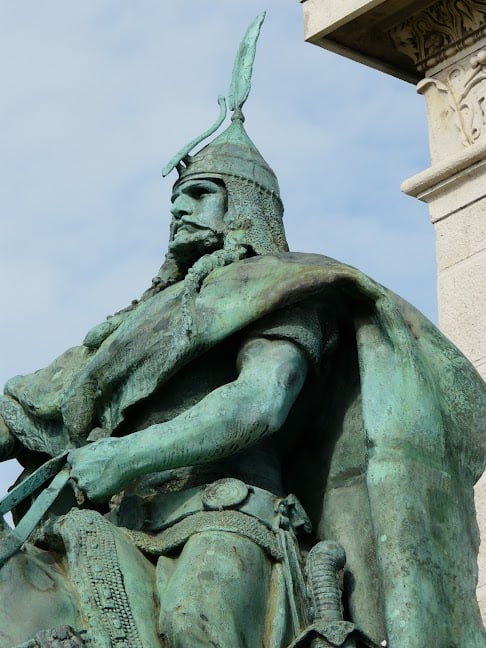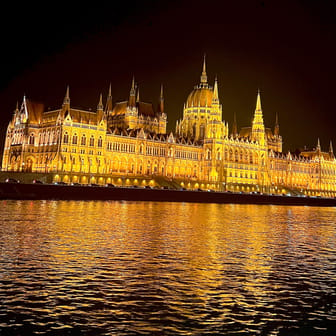Heroes' Square





Ask ThatchGPT
Suggest a local expert to plan my trip
Suggest an unique itinerary for my Budapest trip
What foods do Budapest locals eat
What are some true hidden gems in Budapest
Help me brainstorm trip ideas for Budapest
Help me plan a family-friendly trip to Budapest
What people say
Pedro Pereira
Available for hire
"Heroes’ Square, or Hősök tere, is among the most iconic landmarks of Budapest. Positioned at the terminus of Andrássy Avenue and adjacent to City Park, the square is dominated by the Millennium Monument, a tribute to Hungary’s history and the thousandth anniversary of the Magyar conquest of the Carpathian Basin. The site also features two prominent cultural institutions: the Museum of Fine Arts and the Hall of Art (Műcsarnok).
At the heart of the square is the Millennium Memorial, completed in stages between 1896 and 1906. Its centerpiece is a towering column crowned by a statue of Archangel Gabriel, holding the Holy Crown of St. Stephen and an apostolic double cross, symbolizing Hungary’s Christian heritage. At the base of the column stand statues of the seven Magyar chieftains led by Árpád, the nation’s founder, depicted in an evocative and imaginative style rather than strict historical accuracy.
The semi-circular colonnades behind the column house statues of key figures from Hungarian history. The left colonnade celebrates medieval and early modern monarchs like Stephen I, Hungary’s first king, and Louis I, who expanded Hungary’s influence. The right colonnade features national heroes and statesmen, such as Matthias Corvinus and Lajos Kossuth, symbolizing Hungary’s cultural and political evolution. Above the colonnades are allegorical sculptures representing ideals such as Peace, Knowledge, and Glory.
In front of the monument lies the Memorial Stone of Heroes, a cenotaph dedicated to those who gave their lives for Hungary’s independence. Despite being referred to as the "Tomb of the Unknown Soldier" by some, it contains no human remains and serves solely as a symbolic tribute.
The square has been a venue for major historical events, including the 1989 reburial of Imre Nagy, a leader of the 1956 Hungarian Revolution. The Millennium Monument itself has undergone modifications over the years, with statues of Habsburg rulers replaced by figures more representative of Hungarian national identity following World War II."
Read more in:
Keren
"Los Baños Széchenyi son los baños termales más grandes de Budapest, inaugurados en 1913. Ubicados en el Parque de la Ciudad, ofrecen 18 piscinas termales tanto al aire libre como en interiores, alimentadas por pozos termales. Con arquitectura neobarroca, las aguas termales son conocidas por sus propiedades terapéuticas. El lugar cuenta con saunas, baños de vapor y servicios de spa. Además de ser un punto de relajación, Széchenyi organiza eventos y fiestas nocturnas. Abierto todos los días, su ambiente relajado atrae tanto a lugareños como a turistas."
Sevinch Muminova
"Heroes' Square stands as Budapest's largest and most emblematic square. At its center stands the Millenary Monument (Ezeréves emlékmű), a 36-meter-high pillar topped by a golden Archangel Gabriel, bearing the Hungarian crown and a cross. At the column's base, you'll find Prince Árpád and six other Magyar chieftains who established themselves in the Carpathian Basin in the late 9th century. The colonnades behind the monument house 14 statues of rulers and statesmen, ranging from King Stephen on the far left to Lajos Kossuth on the far right."
Read more in:
Mentioned in these guides
About Heroes' Square
Get the inside scoop on Heroes' Square from local experts, travel creators, and tastemakers. Browse genuine trip notes, Heroes' Square reviews, photos, travel guides, and itineraries from real travelers and plan your trip with confidence.
Save this spot for later or start mapping out a new trip today
Try our AI Travel Assistant and get instant answers to any questions about your trip.
Ask ThatchGPT


